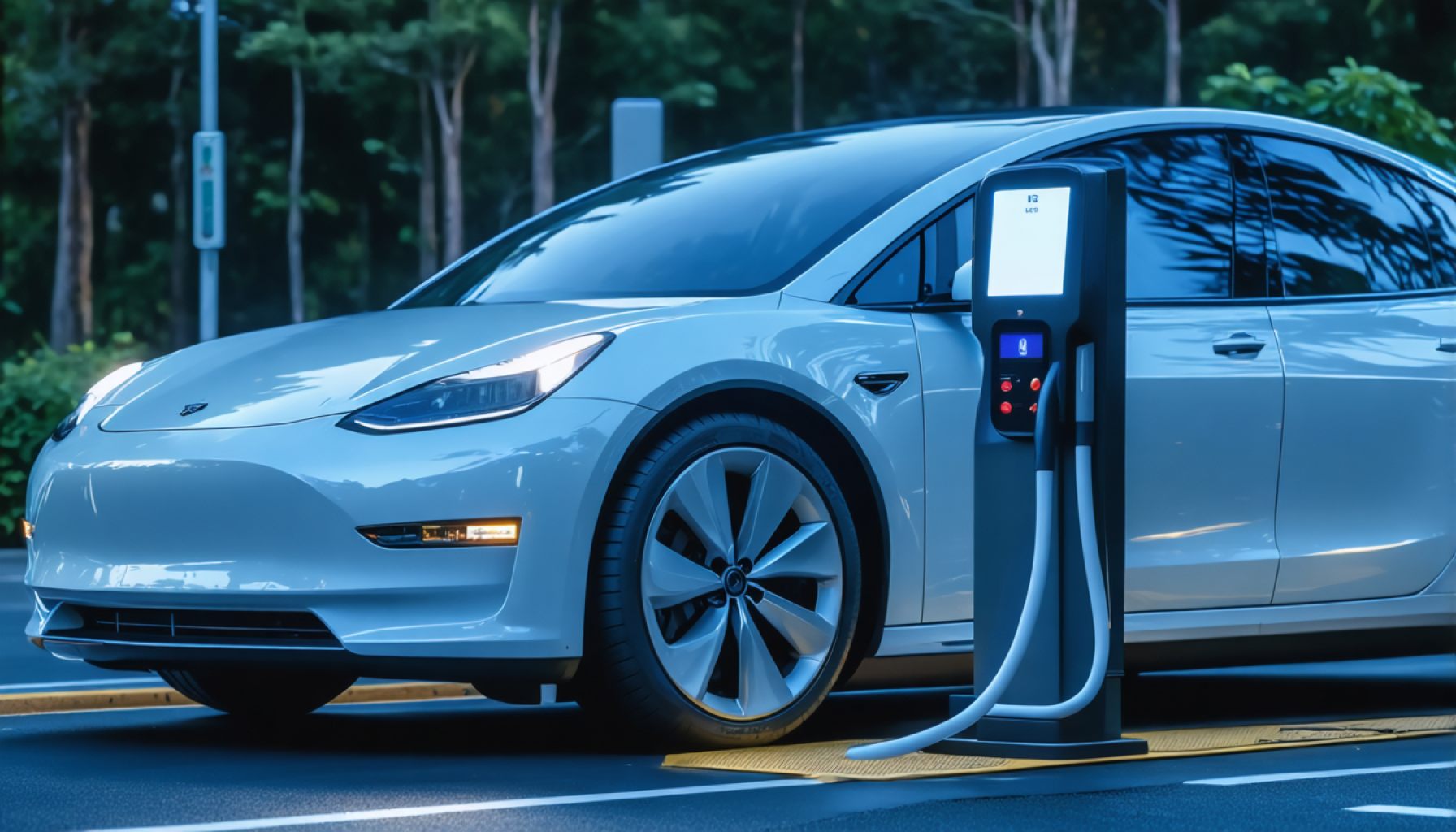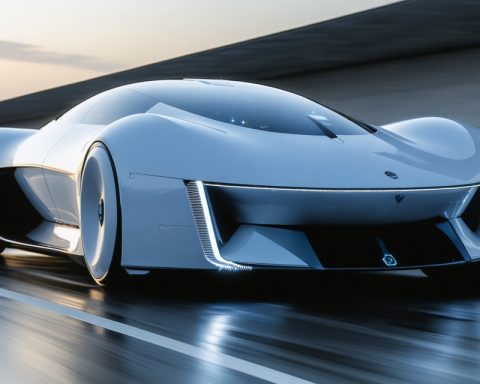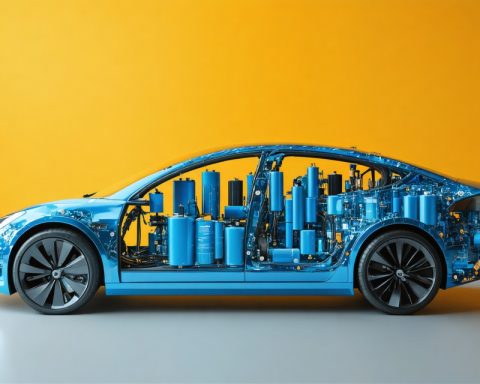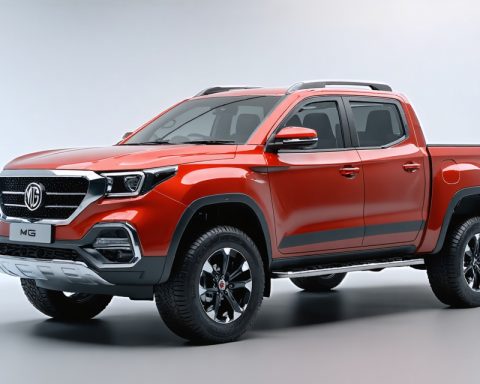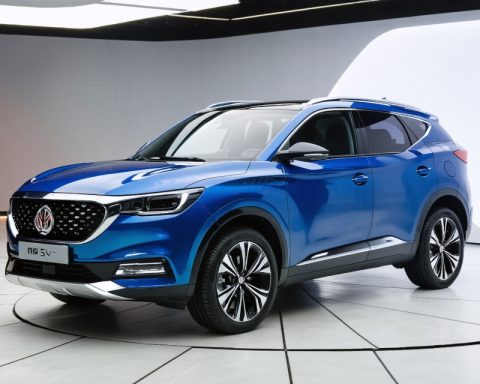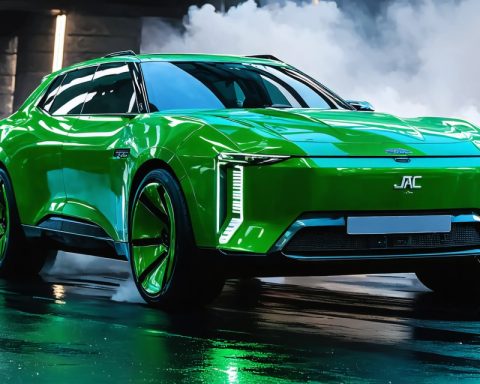- Electric vehicles (EVs) are transforming urban landscapes by reducing noise and emissions.
- Ausgrid facilitates this by aligning grid management with the rise in EVs, without burdening it.
- CEO Marc England champions strategic and balanced energy management, reducing peak demand stress.
- Despite challenges, like insufficient charging infrastructure, Ausgrid plans curbside pole chargers to ease consumer concerns.
- Competitors question funding fairness, but the long-term economic benefits of robust charging networks outweigh costs.
- Infrastructure challenges remain, but advancements in connectivity and reduced installation timelines are expected.
- Ausgrid positions itself as an innovator in sustainable energy, advocating for battery storage and vehicle-to-grid technology.
- The vision is clear: embrace energy innovations to support a sustainable future for coming generations.
Imagine a world where silence reigns over bustling city streets, disturbed only by the hum of electric vehicles gliding along, their impact on the planet as light as their carbon footprints. As the sun sets on outdated myths, one enduring perspective deserves our attention: the electric vehicle (EV) revolution will not, as once feared, overwhelm our power grids. Leading this charge of change is Ausgrid, one of Australia’s largest electricity distributors, which has carved out a forward-thinking pathway through the emerging landscape of renewable energy.
Ausgrid’s narrative reshapes our understanding of EVs and their interaction with the power grid. The once daunting idea that a surge in EVs would cause a blackout-inducing strain is systematically dismantled. Instead, EVs are seen as a catalyst for positive change, with the truth lying in strategic and balanced energy management.
Marc England, CEO of Ausgrid, expresses confidence in his company’s infrastructure, especially within Sydney, the Central Coast, and the Hunter Valley regions. For Ausgrid, incorporating EVs into the grid transcends mere accommodation; it enhances grid usage and optimizes the potential of the existing system. By fostering off-peak charging, Ausgrid envisions lowering customer bills and reducing demand-induced stress on energy supply during evening peaks.
However, the landscape is not without its challenges. Charging infrastructure in Australia lags compared to global standards, with a significantly higher EV-to-charger ratio than the worldwide average. Public enthusiasm for EVs needs to be matched with equivalent advances in charging capacity, which demands both innovation and investment.
Ausgrid’s solution? Ambitious plans for the installation of kerbside pole chargers, blending seamlessly into urban environments without imposing structural upheavals. This initiative promises to alleviate consumer anxiety over charging options, especially for those in apartment complexes or homes devoid of garage spaces.
Amidst the strategic discussions, concerns arise from competitors questioning the fairness of allowing Ausgrid’s regulatory base to fund these rollouts. England counters these criticisms with compelling arithmetic: the long-term benefits far surpass the costs. The introduction of extensive charging networks could significantly drive down electricity bills, given the influx of new EV users boosting network efficiency.
Nevertheless, progress occasionally stumbles over logistical barriers. The deployment of fast chargers, akin to powering a small building, poses substantial connectivity challenges. Even giants like Ampol face delays due to the intricate complexities of these installations. Nevertheless, Englund is optimistic, believing that improved connectivity processes and reduced timelines will eventually streamline this transformation.
In embracing this dynamic shift, Ausgrid emerges as not merely a passive supplier of electricity but as an active proponent of sustainable energy solutions, championing innovations in battery storage and vehicle-to-grid technology. Their comprehensive strategy heralds a smart, efficient, and greener future where electric vehicles and smart networks harmonize symbolically and functionally.
The road ahead may be complex, yet the vision is clear: By embracing energy innovations today, we craft a future capable of sustaining generations tomorrow. As cities and states around the globe navigate this electrifying transformation, Ausgrid stands as a beacon of foresight, illuminating the path from apprehension to opportunity with bold ideas and determined actions.
The Silent Revolution: How Electric Vehicles Are Changing the Energy Landscape
Unpacking the Electric Future: The Intersection of EVs and Power Grids
In recent years, the narrative surrounding electric vehicles (EVs) has shifted dramatically. Once burdened with myths about energy inefficiency and grid overloads, EVs are now seen as pioneers of change in the energy domain. At the forefront of this transformation is Ausgrid, a leading Australian electricity distributor that is reshaping the way we understand EVs and their impact on power grids.
Busting Myths: EVs and Power Grids
Contrary to lingering fears, the influx of EVs is not destined to cripple power grids. According to Ausgrid’s CEO, Marc England, the integration of EVs can optimize grid functionality rather than hinder it. Through strategic energy management practices, such as promoting off-peak charging, Ausgrid aims to minimize stress on electricity networks and reduce customer electricity bills.
How-To Steps for EV Integration:
1. Encourage Off-Peak Charging: Incentivize EV owners to charge their vehicles during off-peak hours to distribute energy demand more evenly.
2. Advance Infrastructure Development: Invest in reliable and widespread charging infrastructure, including kerbside chargers to meet growing demand.
3. Educate Consumers: Increase awareness and understanding among consumers about the benefits of EV technology and sustainable energy practices.
Addressing Infrastructure Challenges
The lag in Australia’s charging infrastructure presents a significant hurdle. With an EV-to-charger ratio above the global average, Australia requires both innovative solutions and substantial investments. Ausgrid is championing projects to install kerbside pole chargers, particularly benefiting urban dwellers without garages. These endeavors offer a seamless charging experience within city landscapes.
Industry Trends and Predictions:
– Market Growth: Bloomberg predicts that EVs will account for 58% of new passenger car sales by 2040, underscoring the urgent need for robust infrastructure.
– Technology Advancements: Continued advancements in battery storage and vehicle-to-grid (V2G) technologies promise to enhance the efficiency and sustainability of EVs.
Overcoming Challenges in Fast Charger Deployment
Deploying fast chargers is akin to powering small buildings—an undertaking fraught with connectivity hurdles. Despite these challenges, companies like Ampol and others are committed to improving connectivity processes and reducing installation timelines.
Real-World Use Cases:
– Urban Centers: Utilize fast chargers to serve businesses and high-density housing areas, providing reliable charging for commuters and apartment dwellers alike.
– Public Spaces: Install chargers in frequently visited public venues, such as shopping centers and leisure facilities, to maximize accessibility.
Pros and Cons of Kerbside Pole Chargers
Pros:
– Integrate smoothly into existing city infrastructure.
– Offer widely accessible charging options without requiring new garages.
– Alleviate range anxiety for apartment residents and city dwellers.
Cons:
– Might face regulatory hurdles and opposition from entities questioning their funding.
– Require continual maintenance and upgrades to address evolving technology.
Navigating Controversies: Fairness in Funding
Concerns regarding the funding of infrastructure projects with regulatory bases have emerged. Ausgrid defends its approach by highlighting the long-term benefits for consumers and networks, including potential reductions in electricity bills due to improved network efficiency.
Actionable Recommendations for Consumers
– Seek Incentives: Explore government incentives for EV purchases and charging infrastructure installations.
– Plan Charging Times: Opt for off-peak charging to benefit from lower electricity rates and reduced grid impact.
– Stay Informed: Keep abreast of technological advancements, such as V2G capabilities that allow EVs to provide power back to the grid.
Conclusion
As the paradigm of urban transportation shifts toward electrification, Ausgrid’s forward-thinking strategies illuminate a pathway not only for Australia but also for the world. By embracing innovation and strategic planning, electric vehicles can evolve from merely eco-friendly alternatives to key players in creating a sustainable energy future.
For more information on sustainable energy and initiatives, explore Ausgrid’s contributions to the electrifying revolution.
